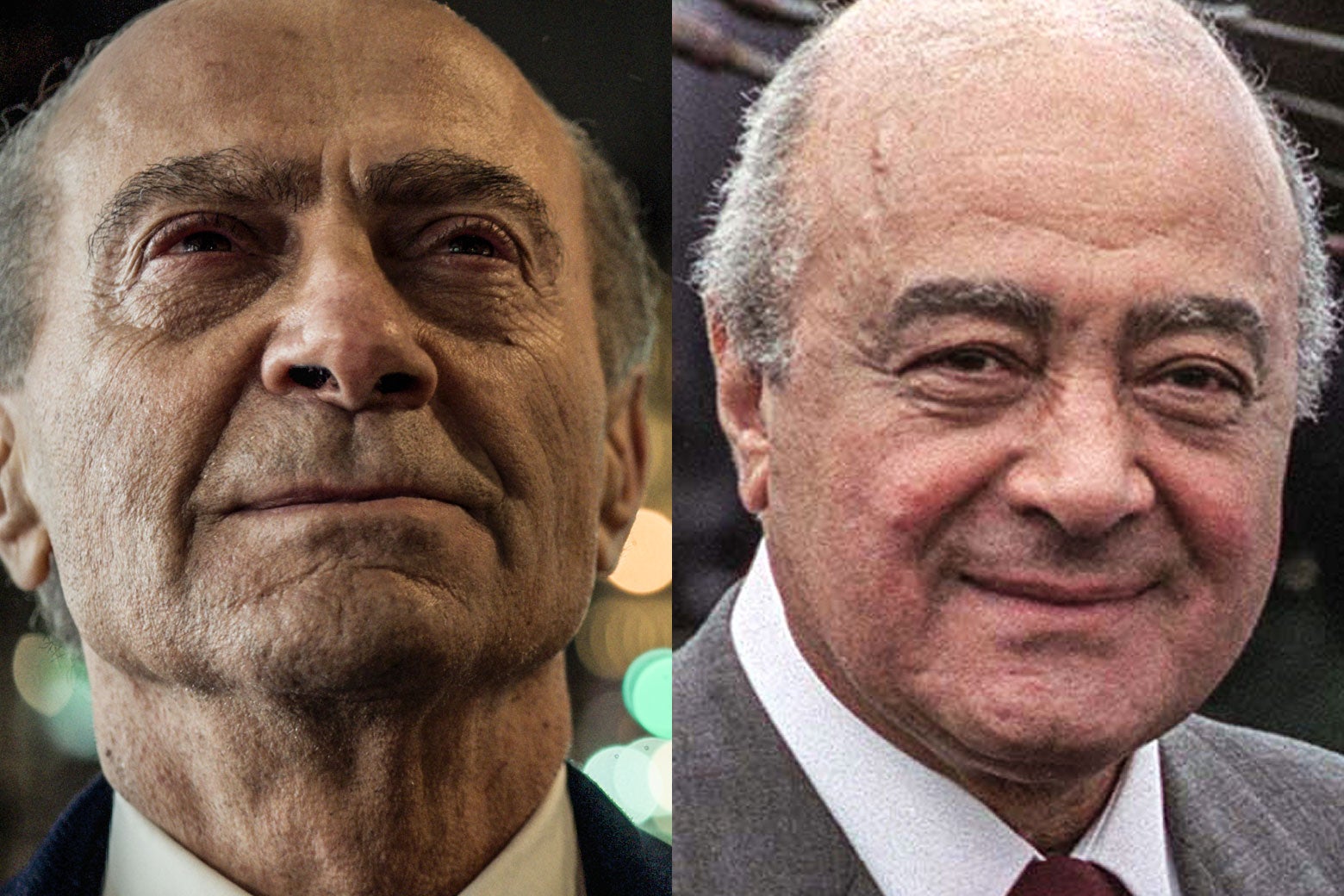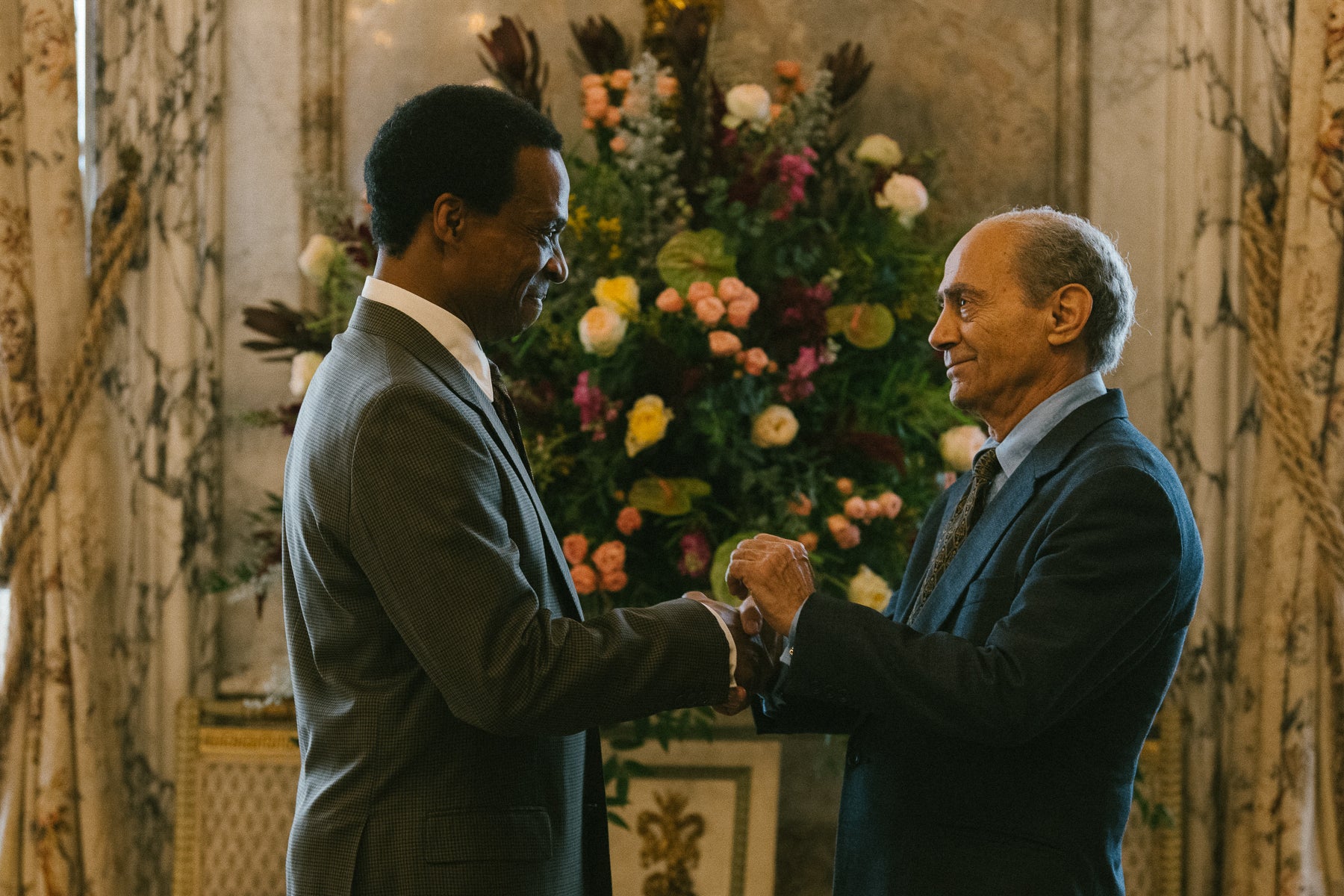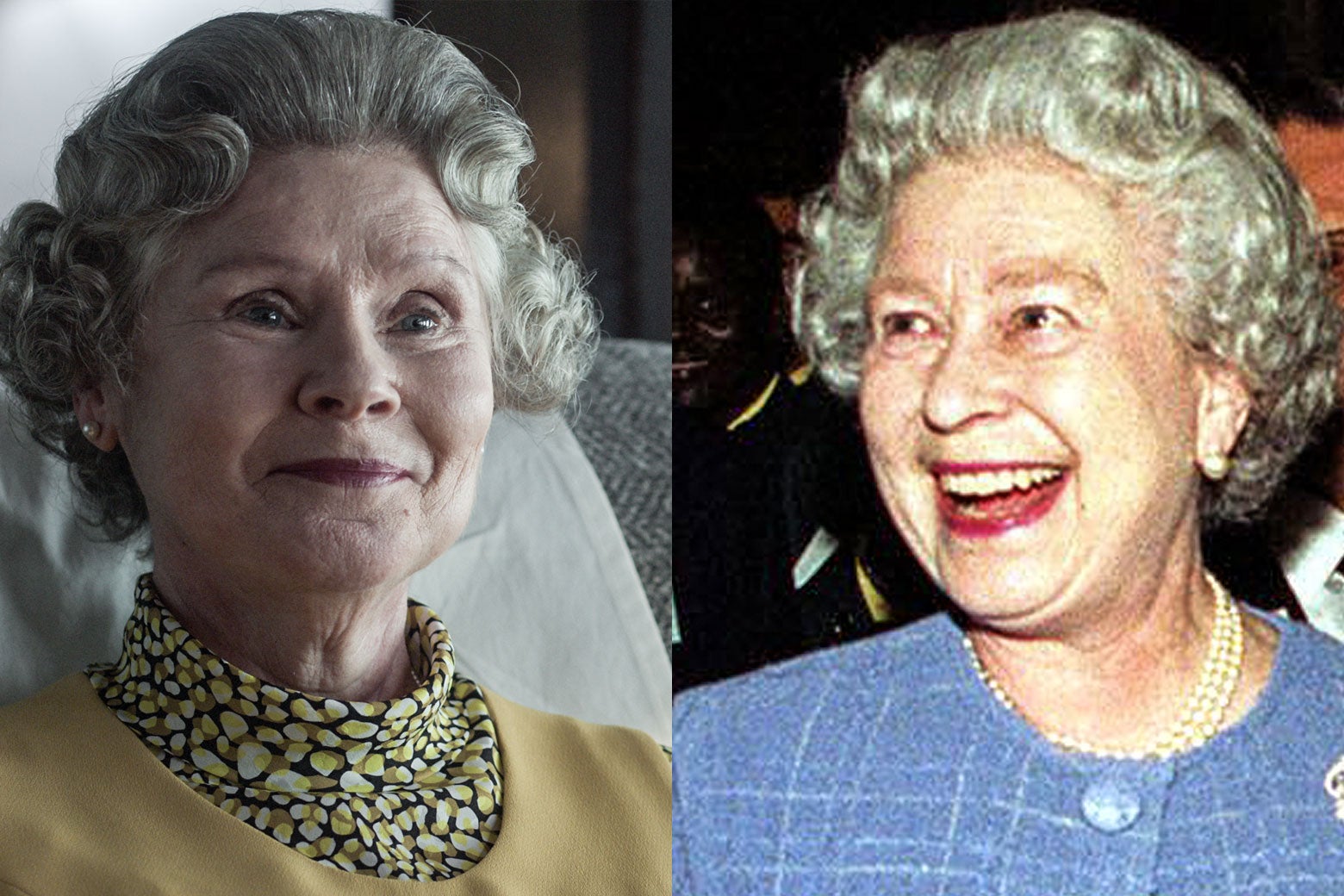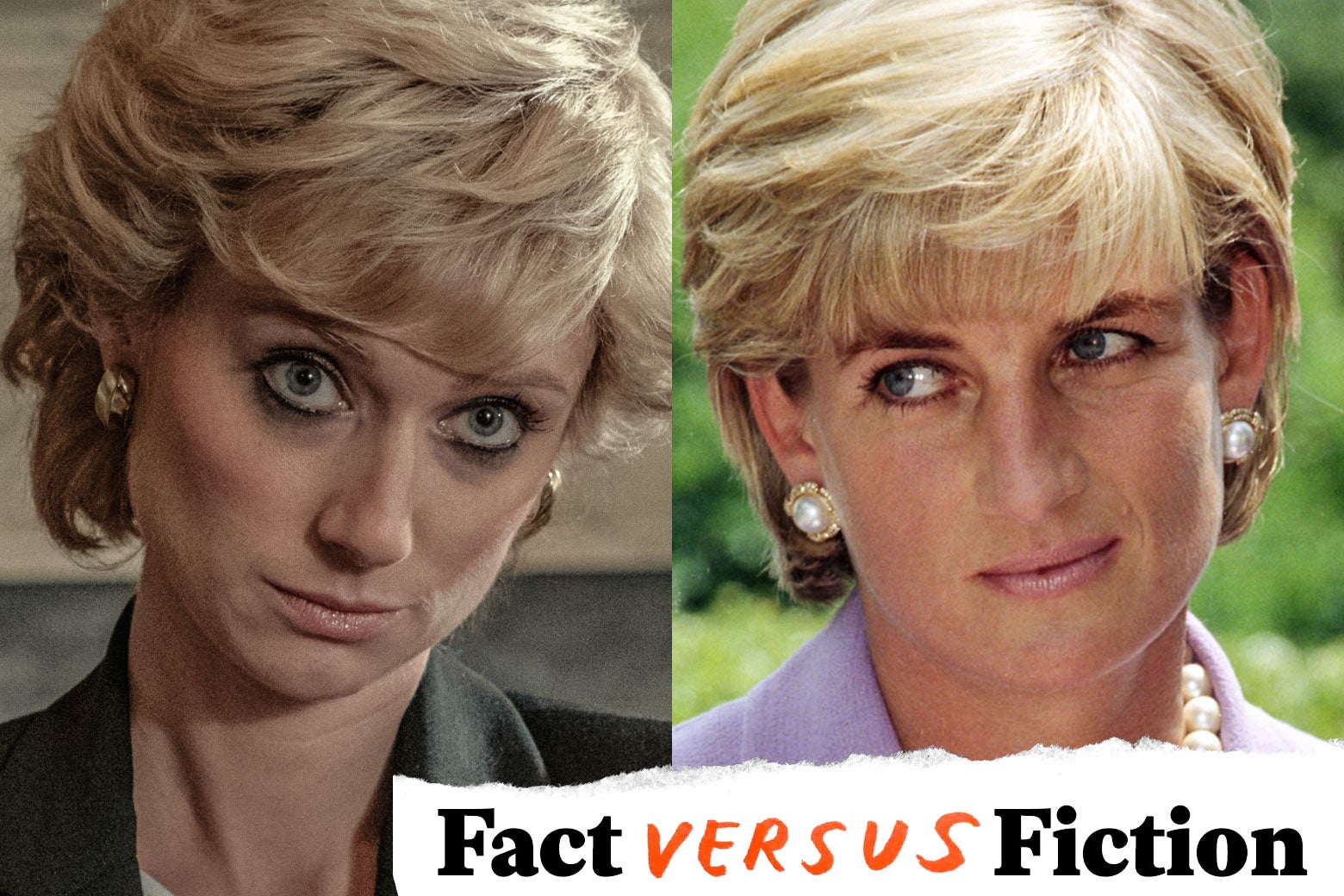The Crown’s fifth season is a story of established relationships coming under stress—in some cases to breaking point, in others managing to re-bond—notably the marriage of Charles and Diana, the marriages of Queen Elizabeth’s other children Anne and Andrew, her own 47-year marriage to Philip, and, most significantly of all, the queen’s relationship with the British people as she is increasingly perceived as out-of-touch and out-of-sync with modern Britain.
Touching as it does on points that are still divisive, and depicting many people who are still alive, the reaction to this season has been the most contentious yet, with staunchly monarchist right-wing papers decrying the series as tasteless in the wake of Elizabeth II’s death and suggesting the show was disrespectful to the late monarch. In response, Netflix added a disclaimer to its marketing noting that the show is a “fictional dramatisation” for those who might have been under the impression it is a documentary.
Many of The Crown’s scenes depict private conversations that would never have been noted or recorded so it’s impossible to know how accurate they are. Writer Peter Morgan may have based them on public or written statements, but much of what is said in these scenes is imagined, working backwards from the characters’ later actions and extrapolating what have might have motivated them. Several conversations undoubtedly never happened, but, since we can’t read the characters’ minds, without this device that lets us hear their thoughts, we would have no idea of what the characters may have been thinking. At any rate, we look at what definitely happened and what may be invention in Season 5.

Did Charles Want His Mother to Abdicate?
Worried that the monarchy will have drifted into irrelevance before he even ascends the throne after an aide tells him a Sunday Times poll has shown that the monarchy is viewed as “irrelevant, expensive, and out of touch” while Charles himself is seen as “young, modern, and energetic,” Charles (Dominick West) sounds out Prime Minister John Major (Johnny Lee Miller) about whether the queen should abdicate in his favor.
In fact, a Times article from January 21, 1990, reported that although one in four Britons felt that the monarchy was “an expensive luxury the country cannot afford,” on the whole it remained “a remarkably popular part of British life,” with nine out of 10 people feeling “very or mainly favorable about The Queen.” While the scene’s statement that almost half would support an early abdication is correct, the actual poll question included the crucial phrase “at some stage”.
On October 15, John Major strongly denied a discussion on the subject ever took place, with a spokesman declaring “Sir John has not cooperated—in any way—with The Crown. Nor has he ever been approached by them to fact-check any script material in this or any other series … there was never any discussion between Sir John and the then Prince of Wales about any possible abdication of the late Queen Elizabeth II—nor was such an improbable and improper subject ever raised by the then Prince of Wales (or Sir John).” Nor are there any records suggesting such a meeting took place.
What is true, however, is that the royal finances were under scrutiny and the queen was perceived as out of touch on that front, especially as ordinary citizens were struggling through a recession. Certainly tabloids like the Mirror and the Express were running headlines like “Is It Time for Her to Hang Up Her Crown?” and “With Prince Charles waiting in the wings, is it time for her to step down and enjoy a happy and glorious retirement?”
As well, Princess Diana’s former private secretary Patrick Jephson wrote in The Telegraph that while Prince Charles had never met with Major, he had indeed discussed the poll and its implications with a former (unnamed) prime minister. He also reported that he was told the Sunday Times poll “was recognised inside the paper as one of several kites flown by elements in the prince’s office to test the public mood and encourage perception of the then beleaguered heir as a credible monarch-in-waiting.”
Did Prince Philip Give Diana Advice?
As the Wales’ marriage collapses and Diana (Elizabeth Debicki) becomes ever more visibly unhappy, Philip (Jonathan Pryce) seeks her out to tell her he has always felt protective and fond of her, and suggests she can break the rules as long as she is loyal to her husband and the royal family in public. In other words, discretion is key, an approach, the drama makes clear, Philip always adopted in pursuing his own extra-marital interests.
Ingrid Seward, the former editor of Majesty magazine, confirmed the Prince’s initially sympathetic (he later became far more censorious) treatment of Diana in her biography Prince Philip Revealed, writing “When [Diana] found the restrictions of royal life difficult, it was Philip who helped her.” He wrote affectionate letters to her as one outsider who had married into the royal “system” to another, even saying he thought Charles “was silly to risk everything with Camilla,” and that “if invited, I will always do my utmost to help you and Charles to the best of my ability. But I am quite ready to concede that I have no talent as a marriage counselor.” Eleven of these notes formed part of the 2007–08 inquest into Diana’s death.

Did Mohamed Al-Fayed Ever Meet the Queen?
A product of British-ruled, pre-war Alexandria, the entrepreneurial Mohamed Fayed (he later added the honorific “Al-”) grows up determined not to defeat his colonial overlords but to out-do them and becomes obsessed with becoming part of the Royal circle as a symbol of his ascent. Attending a polo match, he sees his great rival, Harrods’ largest shareholder Tiny Rowland, who has sponsored the match, sitting next to the queen while he himself is several rows back despite a sizeable donation. Later, having purchased Harrods himself, Al-Fayed (Salim Daw) is in the sponsor’s seat expecting Her Majesty to sit next to him. But the queen runs into Margaret and sits next to her sister instead, suggesting Diana take her place. The two bond over not being particularly fond of horses and start up a friendship.
In fact, a photograph shows Al-Fayed standing next to the queen as she presents prizes at the Royal Windsor Horse Show in May 1997, and he had known Diana from at least a decade earlier when he sponsored the Harrods Polo Cup at which the Princess presented prizes, including one to her husband who competed in the match.

Did Sydney Johnson Exist?
At a reception at the Ritz in Paris, which he has recently purchased, Al-Fayed notices a black waiter and tells his son Dodi to fire him. But when he discovers the waiter is actually Sydney Johnson, a Bahamian who was the Duke of Windsor’s personal valet for more than 30 years, he hires Johnson to be his own valet and to teach him how to be the consummate English gent. When he learns from Johnson that the late duke and duchess’ dilapidated chateau is up for sale, Al-Fayed buys it as part of his plan to ingratiate himself with the queen, figuring she will want to express her gratitude, and puts Johnson in charge of restoring the house to its former glory. He invites the queen to retrieve some of the duke’s sensitive personal correspondence but she sends her personal private secretary instead. Nevertheless, his bond with Sydney endures and, after the valet dies, Al-Fayed visits his grave.
Sydney Johnson was indeed a real person, who joined the Duke of Windsor’s household in 1940 when he was 16 and the duke was serving as Governor of the Bahamas. Despite the duke’s casual racism (shown by the abusive racial epithets strewn throughout his letters of the time) and his lack of generosity or loyalty to anyone except the Duchess, he seems to have held Sydney in high regard, even giving him a large piece of land in the Bahamas. But Sydney was never able to build the home he had envisaged on the land as later that year he accompanied his employers to their new residence in Paris.
In 1973, a year after the duke died, Sydney had the temerity to ask if he could to leave work at 4pm each day, to be able to look after his motherless four children (he was by now a widower). According to the Telegraph, the Duchess responded by summarily firing him, saying “I never want to see you again.”
Johnson went to work for Al-Fayed in 1977 and was put in charge of renovating the chateau. It is not known if he tended to Johnson on his deathbed, as the show depicts, but he did note Sydney was “truly a gentlemen’s gentleman.”
Can Prince Charles Really Breakdance?
Charles attends an event for his Prince’s Trust charity, which helps provide educational and career training opportunities for disadvantaged young people, telling them that while they might not think he understands their situation, he can relate to “those who have been rejected and over-looked.” Later, to mark the end of the event, there’s a dance party, where some of kids start breakdancing. Charles is persuaded to join in and, if not an accomplished rocker and popper, at least gains points for enthusiasm.
This actually happened, and what’s more there’s video to prove it. In 1985, Charles visited a Youth Meets Industry course along with 300 young people looking for work. At the end of the day, some tracksuit-wearing breakdancers showed the Prince, 37 at the time, how to master the basic “2-step Toprock.”
In fact, Morgan hadn’t originally included this scene in the script until West told him about the footage, at which point the writer created a scene around it.
Did Philip’s DNA Really Help Identify the Romanovs’ Remains?
Three years after his election in 1991, Boris Yeltsin is invited to Buckingham Palace and reciprocates by invited the queen to Moscow for a state visit, the first by a British monarch. However, Yeltsin is in HM’s bad books because as a regional official he authorized in 1977 the destruction of Ipatiev House, the building in Siberia where her “cousins,” as she calls them—Tsar Nicholas II, a cousin of Elizabeth’s grandfather, George V, Tsarina Alexandra, and their children—were executed by Bolsheviks in 1918, which she sees as an act of disrespect. Yeltsin says he will restore the dignity of the dead and orders a major excavation effort to find the remains so the Elizabeth and Philip can attend the funeral during their trip. Bones are found but so corroded by the acid they were doused in they are unidentifiable by the usual techniques.
However, it is suggested that the remains might be able to be identified by the new technique of DNA matching if Prince Philip, whose maternal grand-mother was Alexandra’s sister, is willing to provide mitochondrial DNA. He complies, but unfortunately, when the queen and Philip arrive in Russia, they are told the funeral cannot (?) go ahead because two bodies are still unidentified. Later John Major informs the queen that the bodies’ identities have been confirmed and one is Nicholas II.
This all happened, although the timeline has been considerably compressed. The remains of the family were actually located in the 1970s and were excavated in 1991 and identified in 1993 before the Royal trip in 1994. The identity of remains of the Tsar weren’t confirmed until 1998 and the reburial took place later that year. There is no evidence that the visit to Moscow was timed to include a burial ceremony.

Did Martin Bashir Trick Diana Into a TV Initerview?
After her separation from Prince Charles, Diana is left out in the cold, with few allies and hounded by the press. In 1995, Martin Bashir, a respected reporter with the BBC’s flagship investigative program Panorama, tells his bosses he thinks she would be receptive to doing an interview if it’s presented as an opportunity to tell her side of the story and she will trust the BBC more than the big American networks also pursuing an interview with her. What they don’t know is he is altering documents to raise the chances of Diana cooperating.
Bashir approaches Diana’s brother Earl Spencer through a mutual friend and shows him bank statements, allegedly from off-shore accounts belonging to Patrick Jephson, her private secretary, and Commander Richard Aylard, who performed the same function for Charles, which appeared to show deposits being made into the accounts by a company that he says is a front for the British security services. After checking with Panorama’s editor, who vouches for Bashir, Spencer agrees to introduce the journalist to his sister.
At his meeting with the Princess, Bashir produces the bank statements as proof that the security services are spying on her, which chimes with her feelings of persecution and victimization. He also tells her that her driver, Steve Davies, is in on the plot in addition to Jephson, and there’s a concerted effort to drive her from the country. Her only hope is to go public her side of the story and bring the plot out into the open. The pitch works and Diana agrees to the interview.
This is pretty much what happened. A 2021 investigation headed by Lord Dyson found that Bashir breached BBC rules by mocking up fake bank statements to implicate Jephson and Alyard. As well, Earl Spencer produced eight pages of notes that recorded additional untrue claims made by Bashir, such as assertions that Diana’s private letters were being opened, her car was being tracked, and her phoned was being tapped, in addition to her closest staff and friends conspiring with the Windsors to bring her down.
Since learning that the interview was secured by deception, Prince William has asked that it never be shown again and is reportedly unhappy that it is being used in The Crown, even with it being put in the proper context. “It is my view that the deceitful way the interview was obtained substantially influenced what my mother said,” he wrote. “The interview was a major contribution to making my parents’ relationship worse and has since hurt countless others. But what saddens me most, is that if the BBC had properly investigated the complaints and concerns first raised in 1995, my mother would have known that she had been deceived.”
The show’s account of the secrecy around the making of the interview—with Diana doing her own makeup, Bashir and his cameraman sneaking in to Kensington Palace disguised as hi-fi system delivery men, and the editing taking place in a retirement hotel on Britain’s south coast—is largely taken from Tina Brown’s The Diana Chronicles and is another unbelievable-but-true story.
The BBC later returned any awards they won for the interview and donated the £1.4 million they made from syndication and licensing to seven charities that Diana had been patron of.

Did Queen Elizabeth II Really Own a Billy Bass?
At a friends-and-family birthday celebration in 1996, Charles gives the queen a tasteful watercolor of a landscape, painted by himself. The queen is appreciative but not especially enthusiastic. Then Andrew gives her a Big Mouth Billy Bass and she can’t stop laughing and showing it to everyone, reinforcing Charles’ view that he will never be appreciated by his philistine family.
Amazingly, according to the Guardian, the queen was given a Big Mouth Billy Bass (by Princess Anne, not Andrew) that is displayed above the piano at her summer retreat Balmoral in the Scottish highlands. Still another account (this one in Finding Freedom: Harry and Meghan and the Making of a Modern Royal Family by Omid Scobie and Carolyn Durand) has Prince Harry as the gifter of the electronic singing fish, although the novelty item’s heyday was long gone by the time the Prince was no longer a child. In any event, “The Queen thinks Billy’s a scream,” a “royal insider” reportedly said.
Did Charles Really Fly Business Class?
After the election of 1997, Prince Charles and new Prime Minister Tony Blair both head to Hong Kong to participate in the handover of Hong Kong from the British to the Chinese, a major landmark in the demise of the British empire. As if to drive the point. home, Charles has to not only fly commercial but fly business class (the shame!) while the politicians live it up and drink champagne in First.
This actually happened, according to excerpts from the Prince’s diaries published by the Mail on Sunday (which Charles unsuccessfully sought to block). Charles wrote that he found himself and his staff on the top deck of a British Airways 747 “in what is normally club class. It took me some time to realise that this was not first class (!) although it puzzled me as to why the seat seemed so uncomfortable.”
